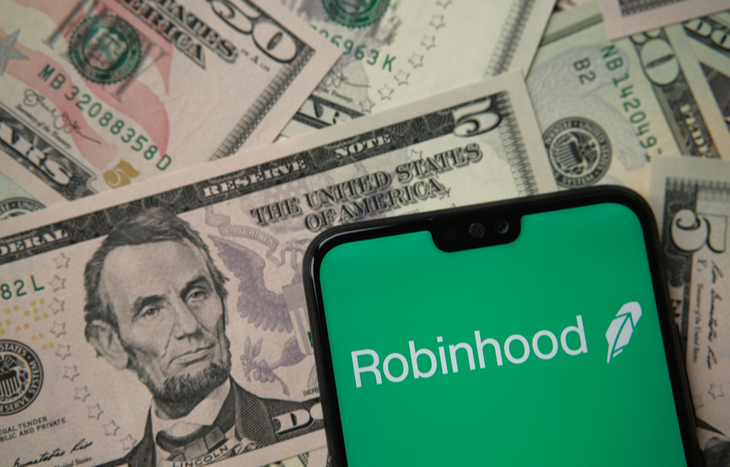The Robinhood IPO Price Has Been Announced
The Robinhood IPO price has finally been announced. But that’s not the only point of interest regarding this disruptive tech company going public. But for those here just for the price, Robinhood Markets Inc. priced its IPO at $38 a share.

The online brokerage – famous for introducing commission-free trading – is also going public in an interesting way. Before we get into that though, let’s look at the traditional IPO process…
For the most part, initial public offerings follow a three-step process. It starts with a company hiring banks to drum up interest in the stock. These banks usually market shares to institutional investors. Once the level of demand is established, the banks work with the company going public to price out the shares. Then they sell them to those institutional investors at the established price. Once these two steps are complete, the stock is released to an exchange and retail investors are given access.
Once the stock is listed on an exchange, retail investors pile in. As this pushes up the price, some of the institutional investors that bought before it officially went public will sell it off for a quick profit.
Keep in mind, this is a slightly different way of going public than using a special purpose acquisition company (SPAC). You can read about that SPAC process with that link.
There is a problem with the traditional three-step process of going public though. When the banks are marketing the stock of the soon-to-be-public company, they try to sell shares to those they deem will be long-term investors. This keeps supply low. And drives of the price for retail investors. But the way the Robinhood IPO price was established is different.
How The Robinhood IPO Price Was Established
Robinhood has a huge user base. An estimated 31 million of ‘em to be exact. This discount brokerage didn’t need to bring in banks to figure out the price of its stock. They put that in the hands of its users. Although, Goldman Sachs and JPMorgan Chase did play a role. As underwriters, they have the option to buy 5.5 million shares.
Anyone with a Robinhood account probably got a message asking if they were interested in investing when the company went public. They essentially polled their user base to see what they would be willing to pay. And the night before its IPO, Robinhood gave early access to its users – instead of institutional investors.
Those that were interested could request shares and essentially name the price they’d be willing to pay for them. And that’s pretty much how the Robinhood IPO price was established. And apparently, there was no shortage of interest.
Robinhood, which trades under the ticker HOOD, sold 52.3 million shares leading up to its IPO. In the process, the company raised nearly $2 billion. And all of this led to a valuation of $32 billion. It’s also worth noting that co-founders Vlad Tenev and Baiju Bhatt sold around $50 million of stock each. Who woulda thunk giving investors commission-free access to the markets could be so lucrative.
But Is Robinhood a Good Investment?
With the Robinhood IPO price set at $38 a share, investors still have reason for uncertainty. Its business model came under a whole lot of scrutiny earlier in the year. Its role in the meme stock debacle soured many users. And its so-called “gamification” of investing isn’t looked upon too kindly by lawmakers. Case-in-point, the parents of one user are suing the brokerage in a wrongful death suit after their son committed suicide thinking he’d lost nearly $750,000 from a risky investment he made on Robinhood.
Nonetheless, in its updated prospectus, Robinhood’s second quarter revenue estimated are between $546 million and $574 million. This is up from $244 million in the second quarter of last year. And revenue in the first quarter of the year was up 309% compared to the previous year. So, momentum is certainly on Robinhood’s side.
That being said, Robinhood is expected to have a net loss around $500 million in the second quarter of 2021. This after turning a profit in the same quarter last year. But expansion can be expensive. So this isn’t terribly surprising.
Which way the stock’s price goes is really anyone’s guess. As a disruptive tech company, the Robinhood IPO price of $38 seems quite reasonable. But expect some volatility in share price in the near future. Because we think it’s going to be a bumpy ride for a while before interest steadies.
The Bottom Line on the Robinhood IPO Price
Just as Robinhood “democratized” the investing process, it seems to be doing the same thing with the IPO process. Which is why the Robinhood IPO price seems reasonable. But that doesn’t necessarily mean its value will only go up. It’s going to be interesting to see how the company’s big experiment into being a publicly traded company pans out.
If you’re looking for an investment opportunity with a little more certainty, we suggest signing up for the free Trade of the Day e-letter. Expert traders Bryan Botterelli and Karim Rahemtulla help guide investors through choppy markets. They share their specialized research that only true veterans of the market can provide. Just enter your email address in the box below to get started.
About Matthew Makowski
Matthew Makowski is a senior research analyst and writer at Investment U. He has been studying and writing about the markets for 20 years. Equally comfortable identifying value stocks as he is discounts in the crypto markets, Matthew began mining Bitcoin in 2011 and has since honed his focus on the cryptocurrency markets as a whole. He is a graduate of Rutgers University and lives in Colorado with his dogs Dorito and Pretzel.





